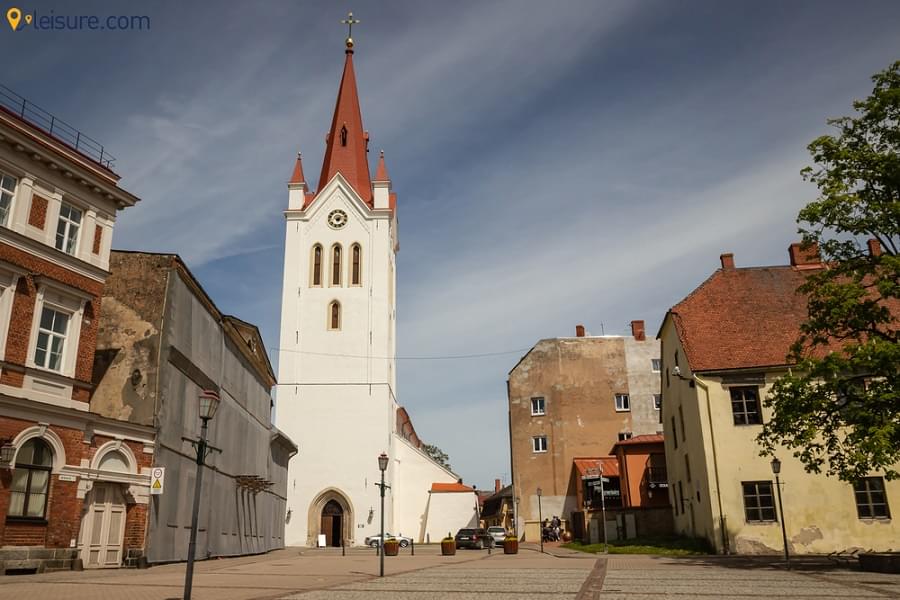Experience The Beauty of Latvia With This 3-Day Latvia Tour Itinerary








Latvia is a charming European country which is finally getting all the praises it deserves. This three-day tour itinerary lets you discover the beauty of Latvia, and experience some of its best architecture and historic beauty the pleasant under-the-radar destination has to offer.
A Brief Look at the Latvia Tour
(Day 1): The Old Town of Riga
(Day 2): A One Day Trip of Rundale Palace
(Day 3): Exploring The Central Market of Riga
Places To Visit
Riga’s Old Town, Rundale Palace, Riga’s Central Market
Tour Price
Our private tours typically range from $500 - $1000 per person/per night depending on chosen hotels and room categories, vehicles used, types of tours, flight cost, time of year and other factors. Make an inquiry for a customized trip quote.
Detailed Itinerary
Day 1: The Old Town of Riga
Base yourself in Riga for your entire Latvia journey. Riga is the capital of Latvia and also the European Capital of Culture in 2014.
-
Start by exploring Riga's pleasant old town, which is full of laid-back cobblestone streets, postcard-perfect medieval buildings and romantic narrow alleys. Begin in Ratslaukums with its majestic views of Town Hall and the reconstructed Blackheads' House. Head out to the Dome Cathedral with its stunning cloisters dispersed with artifacts of Latvian history. Later, ditch the map and just stroll around the twisty streets, absorbing the city's storybook kind of atmosphere.
-
Once you have had enough of Old Town, make your way northeast until you reach the peaceful Bastejkalns Park of Riga. The park was constructed in the mid-1800s on the site of Old Town's historical defensive rampart - the charming canal that snakes through it used to be a moat! Wander through the park until you reach Brivibas Bulvaris (Freedom Boulevard), which is a partly-pedestrianized street and plaza crowned by Latvia's iconic Freedom Monument. The memorial was built in 1935 on the spot where a statue of Peter the Great once stood. The sculpture exhibits depictions of Latvian culture and history. It remains a significant symbol of Latvian independence.
-
In order to gain an in-depth understanding of why Latvia's Freedom Monument still means so much to its locals, make your way to the Museum of Occupation. Situated at the crossroads of German and Soviet aggression, Latvia was occupied by either the USSR or the Nazis from 1940 until 1991. The museum offers an enthralling and emotionally moving sneak-peek into Latvia's turbulent recent history and life under the two regimes. Make sure not to miss the videos, particularly the interviews with survivors of Soviet deportation.
-
Riga boasts around 800 buildings in the art nouveau architectural style - more than any other European city. Situated in a building having a spiral staircase, the Art Nouveau Museum offers a glimpse at a restored art nouveau apartment and provides information on life in turn of the century Latvia. It also gives an insight into what happened to all these charming buildings during the Soviet Occupation and the ongoing restoration process. In case you wish to brush up on your art history, art nouveau refers to an artistic European movement that swept between the 1880s and World War I. It is characterized by curves, flowing lines, and quaint incorporation of elements inspired by the natural world. The Art Nouveau Museum is situated appropriately in the heart of Riga's Art Nouveau district.
-
You can also download the museum's helpful interactive map having information on the city's most popular buildings and wander through the streets on a self-guided walking tour. Even if you're not really a fan of the amazing architecture, the neighborhood is a rejuvenating change of pace from Old Town and provides an opportunity to witness more of what Riga has in store to offer you.
Day 2: A One Day Trip of Rundale Palace
Traverse down to southern Latvia for a refreshing and interesting tour of incredible Rundale Palace, which is an eighteenth-century Baroque mansion constructed by Bartolomeo Rastrelli, the same architect behind the most popular Russian royal residences including the Winter Palace, Peterhof, and Catherine's Palace. The majestic palace might appear like it is in the middle of nowhere, however, it was once home to two most powerful men in Russia - Prince Platon Zubov, the last lover of Catherine the Great and Ernst Johann von Biron, who ruled the Russian Empire for a time as regent. You'll never experience a palace quite this majestic with so few other visitors around. It's like having it all to yourself. After you are done with exploring, make your way to the basement for a deliciously cheap meal.
On reaching back to Riga, head out with locals at Balta Pirts, a traditional Baltic-style public sauna. Locals are generally more than happy to provide guidance, though you can't really go wrong with repeating the full of energy combination of shower, sauna, and ice cold pool over and over again. In case you really feel adventurous, ask the front desk for a birch slota, which is a bundle of dried birch leaves, and use it to scourge yourself while you're in the sauna. It feels absolutely amazing!
Day 3: Exploring The Central Market of Riga
Begin your day in the largest market of Europe, housed in five of the nine remaining German Zeppelin hangars of the world. Grab some pastries for breakfast and bargain with vendors for creamy local cheeses, freshly picked mushrooms, and handmade wool socks and mittens to keep you warm enough through the winter. The Soviets declared this particular market the best in the world.
After you have shopped enough at the market, hop on a bus and travel east to the town of Sigulda. Embark on a cable car over the ancient Gauja River Valley in order to reach the romantic ruins of Krimulda Castle, which dates back to the 14th century. Venture down the serpentine road and stop to applaud Gutmanis Cave, which is the largest cave in the Baltics. The cave is the site of Latvia's one of the most famous legends, The Rose of Turaida, and is the oldest tourist attraction in the country. You can witness inscriptions from tourists who came before you carve inside its walls. From the cave, wander along the main road until you reach Turaida Castle, which is perched high above the river. The castle was constructed in 1214 for the storybook-sounding Livonian Brothers of the Sword and remained a significant military stronghold until it burned down entirely in 1776. The present castle is the result of the restoration, though its tower offers spectacular views of the countryside and the entire thing is surrounded by a ‘wonderland’ country estate.
If you have any queries regarding traveling in Latvia or planning a visit to the country, you can fill out the inquiry form or contact us at Priyanka.sharma@Leisure.com and we’ll try to answer them for you as soon as possible. For more travel inspiration, read all our articles for some amazing trips around the world.

